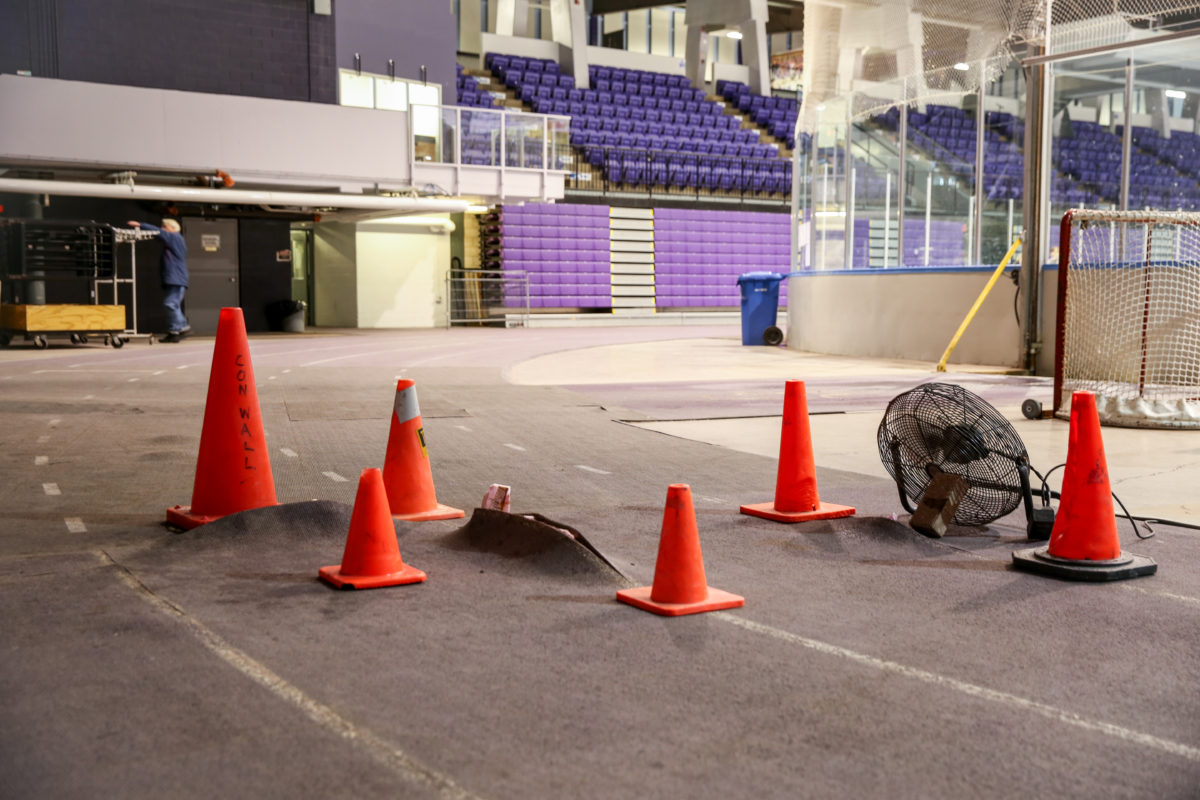One of Canada’s wealthiest universities still using hockey rink as indoor track for athletics program
Western University has hundreds of millions of dollars sitting in the bank; and yet, track athletes are still training on a dangerous makeshift surface, which encircles a hockey rink. The school is proposing a new surface by 2020 (but not a new facility). After past false promises will the school even deliver on a safe track?


After years of running on a beat-down indoor “track” wrapped around a hockey rink, the University of Western Ontario Mustangs track and field team is apparently getting closer to finally receiving the official news they have long awaited. According to Western’s director of sport and recreation, Christine Stapleton, the underwhelming 200m facility, which has long taken punishment from a Zamboni and hockey skate blades, is about to benefit from a track surface replacement. Though Stapleton admits that there is “still a lot of work ahead,” she says: “we are hopeful to keep [the resurfacing] in the fiscal year of 2020.” The Mustangs hope this is not yet another false alarm. Similar plans had been spoken of in 2015 to no avail.
In recent years, the growing mismatch between the University’s massive endowment fund of $679 million – which ranks eighth among all Canadian universities – and the disappointing quality of the Mustangs’ deteriorating track and field facility had elicited frustration from the team’s athletes and coaches, and was garnering an increasing amount of attention from the Canadian running community. The track is located in the Thompson Recreation and Athletics Centre (TRAC), which is also home to both the male and female Western Mustang hockey teams. Track wear and tear, obstruction from circulating hockey players, and conflict for facility rental time are all obstacles the nationally competitive athletics program continuously faces and in turn, the track and field program suffers.
As Canadian universities do not have an outdoor track season, indoor track facilities end up being the primary training ground for student-athletes as they prepare for meets and championships.
Courtney Langille, a fourth year student and 2017 U Sports silver medallist in the 4 x 200m believes that renovations to her home track would benefit the team on many levels. “Firstly,” says Langille, “material that is more absorbent and easier on the joints, would be safest for athletes. A new surface would also prevent any future dangerous bubbling of the track due to water, which has been an issue in the past”. The water from the Zamboni had previously seeped under the track and made for uneven footing – hazardous stuff when taking corners at top speed.
“Secondly,” Langille continues, “sometimes, prospective recruits are drawn in by our University’s strong academic reputation, but when they see the track, the school does not appeal to them anymore. With improvements to our facility and better material, we would attract a lot more young talent.”
Langille’s and the Mustangs’ head coach, Vickie Croley, was pleased with the University’s intent to resurface, and is hopeful that plans are followed through this time. “This is definitely a step in the right direction for the track and field program,” she says. “It will improve the quality of our facility.” Croley is in her 23rd year of coaching, and despite being confined to a suboptimal training venue, she has coached 31 men and women’s teams to OUA track and field aggregate medals, as well as two national championships. Notably, she was the lead coach for Canadian 2016 Olympic Bronze medallist, Damian Warner, in Rio. A former varsity hurdler and long jumper, one would say she knows her way around the track.
Assuming that Stapleton and the Western Athletic Department stay true to their word, Croley will be one step closer to her next goal in coaching. “It is my dream to host a big championship meet here – this facility has potential to improve and to host.” An inadequate track surface and the presence of hockey boards are the only two obstacles left standing in Croley’s way. Though the 2020 plans hopefully take care of the former, the latter remains a problem. The boards are hazardous during meets, for they decrease visibility and their glass component is prone to breaks. In fact, a rogue hammer shattered a sheet of glass at this year’s Don Wright Team Challenge meet, endangering nearby athletes and spectators.
Though removal of the ice rink is not in the immediate plans, Croley is dedicated to improve the facility as much as possible in the meantime. “I hope to have a say in some of the next renovations we make. We want to make this place as competition-friendly as we can. I am hopeful that someday, the rink gets removed, or that a new facility gets built, but for now, we have to be patient. Hearing that our athletic department will invest in our track is a victory for the program.”


